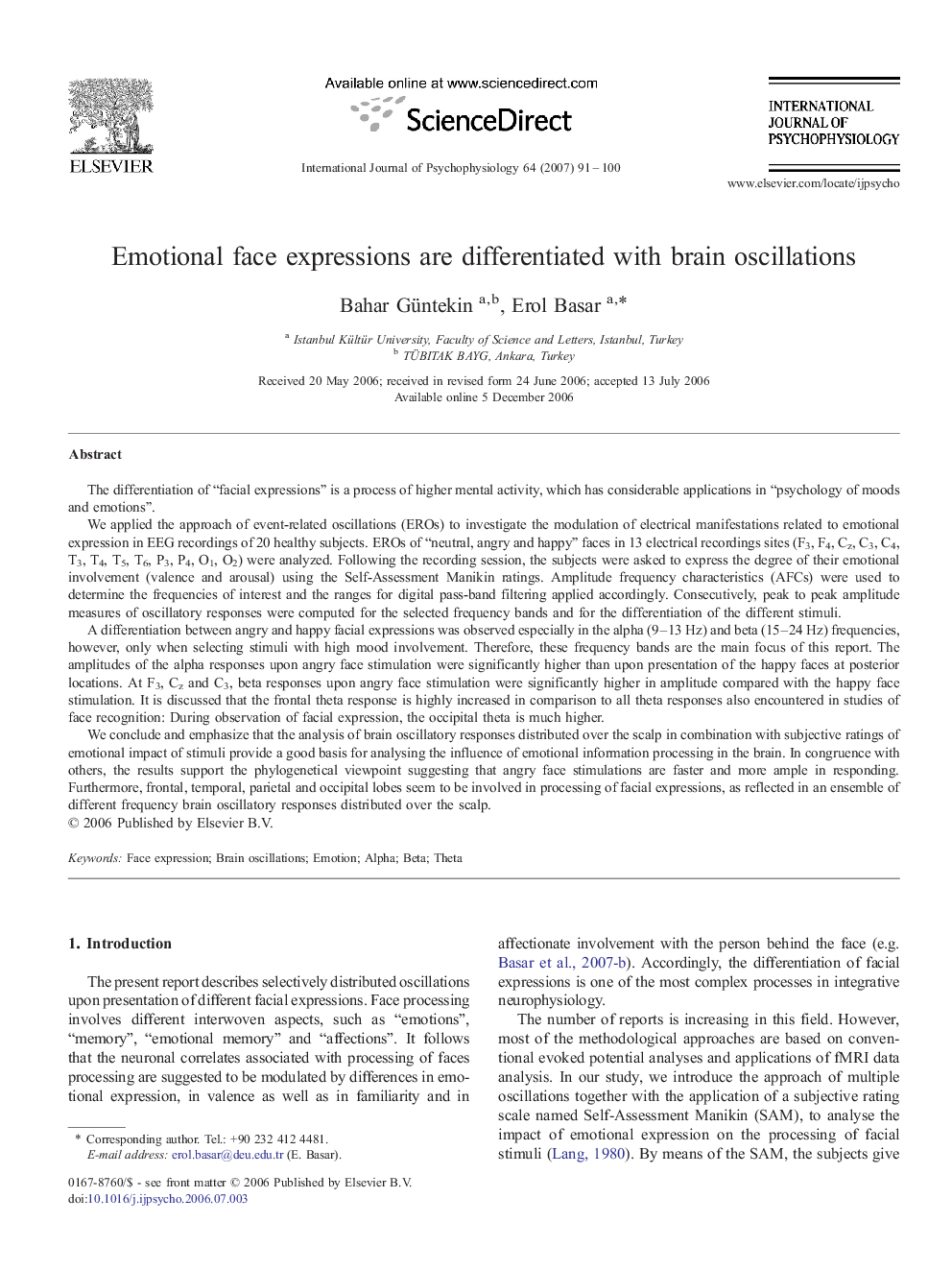| کد مقاله | کد نشریه | سال انتشار | مقاله انگلیسی | نسخه تمام متن |
|---|---|---|---|---|
| 931264 | 1474504 | 2007 | 10 صفحه PDF | دانلود رایگان |

The differentiation of “facial expressions” is a process of higher mental activity, which has considerable applications in “psychology of moods and emotions”.We applied the approach of event-related oscillations (EROs) to investigate the modulation of electrical manifestations related to emotional expression in EEG recordings of 20 healthy subjects. EROs of “neutral, angry and happy” faces in 13 electrical recordings sites (F3, F4, Cz, C3, C4, T3, T4, T5, T6, P3, P4, O1, O2) were analyzed. Following the recording session, the subjects were asked to express the degree of their emotional involvement (valence and arousal) using the Self-Assessment Manikin ratings. Amplitude frequency characteristics (AFCs) were used to determine the frequencies of interest and the ranges for digital pass-band filtering applied accordingly. Consecutively, peak to peak amplitude measures of oscillatory responses were computed for the selected frequency bands and for the differentiation of the different stimuli.A differentiation between angry and happy facial expressions was observed especially in the alpha (9–13 Hz) and beta (15–24 Hz) frequencies, however, only when selecting stimuli with high mood involvement. Therefore, these frequency bands are the main focus of this report. The amplitudes of the alpha responses upon angry face stimulation were significantly higher than upon presentation of the happy faces at posterior locations. At F3, Cz and C3, beta responses upon angry face stimulation were significantly higher in amplitude compared with the happy face stimulation. It is discussed that the frontal theta response is highly increased in comparison to all theta responses also encountered in studies of face recognition: During observation of facial expression, the occipital theta is much higher.We conclude and emphasize that the analysis of brain oscillatory responses distributed over the scalp in combination with subjective ratings of emotional impact of stimuli provide a good basis for analysing the influence of emotional information processing in the brain. In congruence with others, the results support the phylogenetical viewpoint suggesting that angry face stimulations are faster and more ample in responding. Furthermore, frontal, temporal, parietal and occipital lobes seem to be involved in processing of facial expressions, as reflected in an ensemble of different frequency brain oscillatory responses distributed over the scalp.
Journal: International Journal of Psychophysiology - Volume 64, Issue 1, April 2007, Pages 91–100